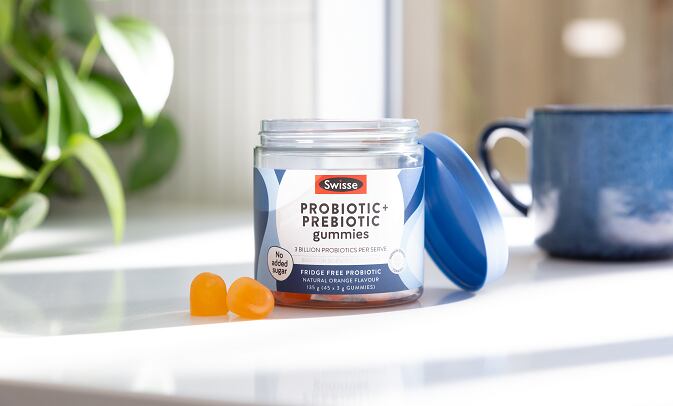This year we are shining the spotlight on healthy ageing, beauty-from-within, mental wellness, infant nutrition and natural ingredients.
Anti-ageing, chronic disease prevention from mid 40s
Preventing the onset of chronic disease from the mid-40s is one of the key trends for companies formulating products for healthy ageing.
China dairy firm Junlebao, which is well-known for its yogurt and infant formula products, has outlined its ambitions to grow its healthy ageing portfolio.
Celia Ning, director of Junlebao’s Nutrition Research Institute, said there was a trend of key industry players launching healthy ageing products targeting the middle-aged consumers.
The focus is different from products catered to the very old population, such as those that address muscle loss and dysphagia.
For Junlebao itself, the firm plans to design products that tackle problems related to chronic diseases, including high blood sugar and cholesterol.
“The major industry players are driving the development of products for the middle-aged to the elderly population, which is what we call the 中老年 population in Mandarin.
“One thing is because we want to design products for a bigger population. Also, people in their middle age, i.e. those over 45 years old, still have a very strong buying power.
“The other thing is that we want to educate them to start the prevention against chronic disease at an earlier stage,” Ning explained.
The company therefore plans to gradually launch more products with scientific-backed formulas to manage conditions linked to chronic diseases.
One of its most recent products is a milk formula for boosting calcium absorption in middle and old-aged consumers. Known as Gai Le, this is also a low glycemic index (GI) product.
Danone is another example which has launched a series of healthy ageing products under the name Gan Mai targeted at the middle-aged group.
In fact, its ambassador, actor Nicholas Tse, would only be 43 years old this year.
Another aspect of healthy ageing is anti-ageing, which Australia firm Melrose believes would expand even further this year.
CEO Nathan Cheong believes that ingredients such as nicotinamide riboside (NR), nicotinamide mononucleotide (NMN), and other ingredients that support nicotinamide adenine dinucleotide (NAD+) production would become a dominant trend.
“I feel that anti-ageing area is growing rapidly and products to address ageing, telemere length shortening would become more and more prominent.
“There will be more and more research coming out around NMN and NR as molecules to boost NAD+ levels, which in turn promotes longevity.
“There are also other ingredients that will support the NMN, NR, NAD+ boosting style of anti-ageing, and I think that would be a dominant trend around what people are bring out,” Cheong said.

These ingredients have been trending in China and Japan around two years ago and they are also picking up pace in Australia, where Cheong pointed out that there were already a number of such products being listed on the Australian Register of Therapeutic Goods (ARTG).
“That says to me that brands would be moving into that direction,” he said, adding that Melrose itself would be launching a NR product early this year.
“We have that in a form of an incredibly bioavailable format, which is going to ensure that the ingredient is taken up in the blood stream and utilised as quickly as possible.”
Novel formulations include the combination of NAD+ with pyrroloquinoline quinone (PQQ) – also an anti-ageing ingredient, said Yang Ye, vice president and general manager of nutrition and health care products at JD Health.
Fonterra, on the other hand, believes that physical mobility is one of the key aspects of healthy ageing.
“When we talk about healthy ageing, physical mobility is important, not just for the senior consumers, but also for middle-age or even young consumers.
“Because young consumers recognise that if they want to remain healthy when they get older, they need to start earlier,” Dan Luo, acting director of active living at Fonterra said.
Based on her observations, healthy ageing is being prioritised in South Korea and Japan.
“Healthy ageing is a trend in the US, and clearly in South Korea and Japan, simply because they already have very serious ageing population,” she said.

Elsewhere in China, the concept of healthy longevity has been adopted by the country’s public healthcare system.
“What I can say is that there are great efforts and organised and structured measures being undertaken right now to implement healthy longevity into the healthcare system in China.
“This is being navigated by implementing healthy longevity solutions and also building such departments at public hospitals,” Dr Evelyne Yehudit Bischof, professor at Shanghai University of Medicine and Health Sciences and vice-president at the Healthy Longevity Medicine Society (HLMS) said.
Segmented demand for beauty-from-within solutions
Beauty-from-within, or “ingestible beauty”, would need to address an array of conditions, beyond simply brightening and moisturising, says brands and ODM/OEM manufacturers.
“Consumer demand segmentation is also driving category growth. Faced with multiple skin problems, consumers' demand for beauty supplements tends to be segmented.
“Taking "anti-aging" as an example, more specific concepts such as anti-sugar, anti-oxidation, wrinkle reduction, lifting and tightening have been extended [in the beauty-from-within segment],” said Robert Wu, vice president of sales at China ODM/OEM firm Sirio Group.
In fact, aside from addressing appearance-related concerns, there are now firms designing solutions for symptoms that accompany bad skin problems.
This is the case for Fonterra, which is expecting to launch its first probiotic for skin health – such as alleviating itch caused by dry skin, in the first half of this year, said Luo.
The probiotic is of the Bifdobacterium longum strain.
“We see huge potential in Asia, because people in this part of the world spend more on beauty products and they are more willing to consume products to support their overall wellbeing,” she said.
She added that beauty-from-within was also picked up by cosmetic and skincare brands, with a couple of them branching into this area.
“We see beauty-from-within as a trend because the traditional cosmetic brands, many of them are starting to realise that consumers do not just want to apply something on their skin and many of them have launched beauty-from-within products.”
Some of the examples include Fujifilm’s AstaLift and Shiseido’s INRYU.
Horphag Research, the supplier of French pine bark extract trademarked Pycnogenol, also noticed that skin care firms have been launching both topical and oral supplements for reducing skin hyperpigmentation.
Companies can also experiment with new forms of beauty supplements targeted at young consumers, according to Wu.
“Young consumers' pursuit of individuality, willingness to try new products and preference for snacking is promoting the development of beauty supplements in dosage forms, flavours and packaging tailored to audiences that want a better overall experience of a product,” he said.

Ingredients wise, while collagen and vitamin C have been the staple for beauty-from-within products, hyaluronic acid, probiotics, and even omega-3 are increasingly frequently used these days.
A report by The Global Organisation for EPA and DHA Omega-3 (GOED) late last year pointed out that APAC companies are now claiming more health benefits using omega-3, with dermatological and weight loss as examples.
Another example is how Japanese firms, such as Shiratori Pharmaceutical, are launching krill oil products for beauty.
Mental health a sign of overall wellbeing
Mental health is being tipped for another strong year, as consumers recognise a strong correlation between mental health and their overall wellbeing.
This is especially the case for Japan and South Korea.
“We believe that we would continue to see a strong focus on mental health among consumers.
“This is also reflected in a recent survey where consumers ranked stress and sleep as highly important health concerns,” Luo said.
As such, the company has been researching on this area using one of its flagship ingredients – milk phospholipids, specifically phosphatidylserine.

Late last year, the firm completed a clinical trial on the effects of milk phospholipids on stress.
The 12-week trial involving 120 participants took place in New Zealand and the results are pending publication in a scientific journal.
“The results showed that after consuming 300mg of milk phospholipids for 12 weeks, stress level was reduced by 45 per cent,” Luo said.
Phosphatidylserine is also featured in the firm’s supplement brand BioKodeLab launched last year. Using both phosphatidylserine and B vitamins, the firm has formulated a product called ThinkSharp that claims to support brain and nervous system function.
“We have a pipeline of clinical research underway on mental health, memory, stress management, skin health, and mobility,” Luo said.
Online search for ingredients that support mental wellbeing, especially “psychobiotic” has boomed in China since 2020.
Taiwan-based company Bened is one of the pioneers in psychobiotic and the company is making its foray as a finished product brand globally from this year.
Two of the new products that it would push out this year are ‘Bened Stress & Performance Support’ for daily support of mental performance and ‘Bened Healthy Ageing Mind Support’ for daily support of the nervous system.
Natural wins out?
Another trend that is emerging in the nutraceutical industry is how some companies are preferring to use natural sources of vitamins and minerals – even from meat organs, instead of synthetic sources.
Cheong highlighted that they were already companies making vitamin products using meat sources and Melrose itself would be launching such products this year.
“Our industry mixes vitamins and minerals synthetically, puts them into a tablet or capsule and sells them.
“I myself have advocated this for 20 years, but where I am now, and how I have evolved in my thinking, is that I feel the best possible ways to get nutrients is from real food because they are in their natural form,” he said, pointing out meat organs as a rich source of vitamins and minerals.
However, since they might not be palatable to most, the next best thing would be to launch them in the form of supplements.

In the same vein, he believes consumers’ preference for natural products is also seen in the food sector.
“We will see a bit of a backlash against the plant-based businesses. I think we are seeing that already, that plant-based products that are replacing meat-based products aren't what they are cracked up to be.
“And you are seeing that in the share price in a lot of these companies, they are just not keeping pace and they can't address the real needs of people who want to eat real food.
“They are certainly not healthier for you,” he said, highlighting the amount of processes and preservatives added to these products.
CNBC reported last May that the shares of plant-based products firm Beyond Meat and Oatly have shed more than half of their value last year. Experts interviewed said the declines might have marked an inevitable shakeout as investor optimism met reality.
Dr Anura Kurpad, co-chairman of the Indian Council of Medical Research (ICMR) Expert Committee, explained in the Nutrachampion podcast (38:00 onwards) the problems associated with these highly processed plant-based foods.
“I actually measured the bioavailability and digestion of pulse protein, particularly chick pea, extrusion smashes up the plant food into a very tiny paste, in doing so, what I found was that we got a ready to eat chickpea paste and its digestibility was fantastic – it went up from 60 per cent to 90 per cent.
“The problem for me is that a lot of these sorts of processing, the taste of the protein is not that great, you need to really disguise it and one of the problems that I have, is that the disguising of these highly-processed foods, is either with sugar or salt,” he said.
HMO boom in infant nutrition
With a burst of research endeavours and impending approval by the Chinese government on the use of 2’-fucosyllase (2’-FL), human milk oligosaccharides (HMOs) are slated to be the hottest ingredient for infant nutrition.
“I would say that the latest trend is still on HMOs and perhaps more types of HMOs.
“Right now, in China, the first two HMOs [to be approved by the Chinese government] are 2'-FL and LNnT (Lacto-N-neotetraose), and we are thinking what would happen after these two are approved.
“Maybe there could be more HMOs approved, maybe its 3-FL (3-fucosyllactose), 3-GL (3′-galactosyllactose), and even 6'-SL (6'-sialyllactose),” said Ning.
Both 2’-FL and LNnT of E. coli origin had passed the technical review of China National Center for Food Safety Risk Assessment (CFSA) Expert Review Committee on October 28 last year.
While there is a possibility that more HMOs would be introduced into the market globally, Ning pointed out that it was not necessary for all HMOs to be added into commercial products.
Over 200 types of HMOs have been identified in mother’s milk.
“The first 10 HMOs probably already provide 90 per cent of the HMOs present in the mothers' milk,” she stressed.

To take things further, she believes that HMOs would eventually become an essential ingredient in infant formula, and would be available as premixes, just like the existing example of vitamins and minerals premixes.
They might also be used to help infants with specific needs, such as pre-term babies or those who suffer from allergies.
“I think HMOs would eventually be like vitamins and minerals. Right now, for infant formula, we have 40 different kinds of ingredients and vitamins and minerals are the must-have.
“And no one would go and communicate the benefits vitamins and minerals, because they are essential and are fundamentally required by regulation, so companies would usually buy premixes.
“Maybe in the future, HMOs would also become like that. For example, there might be an HMO premix, which would contain 10 to 20 essential HMOs,” she said.
However, to move to this stage, the industry would need to overcome the high cost of HMOs, which Ning said was limiting the amount of HMOs that manufacturers could add into the products such that the products would be effective but affordable at the same time.
“We are urgently waiting for new and cheaper solutions,” she said.
At the moment, there are technologies which are expected to be less expensive, such as feeding cane sugar to bacteria producing HMOs.
However, Ning pointed out that these were occurring at lab level with low production rates and there were also regulatory restrictions to be overcome.
Seeing the vast potential in the HMO market, Japanese firm Kirin kickstarted its HMO production in November 2022 in its Thailand-based facility.
The HMOs produced are 2’-FL, 3’-SL, and 6’-SL, which the firm said would be meant for use in infant formulas.





